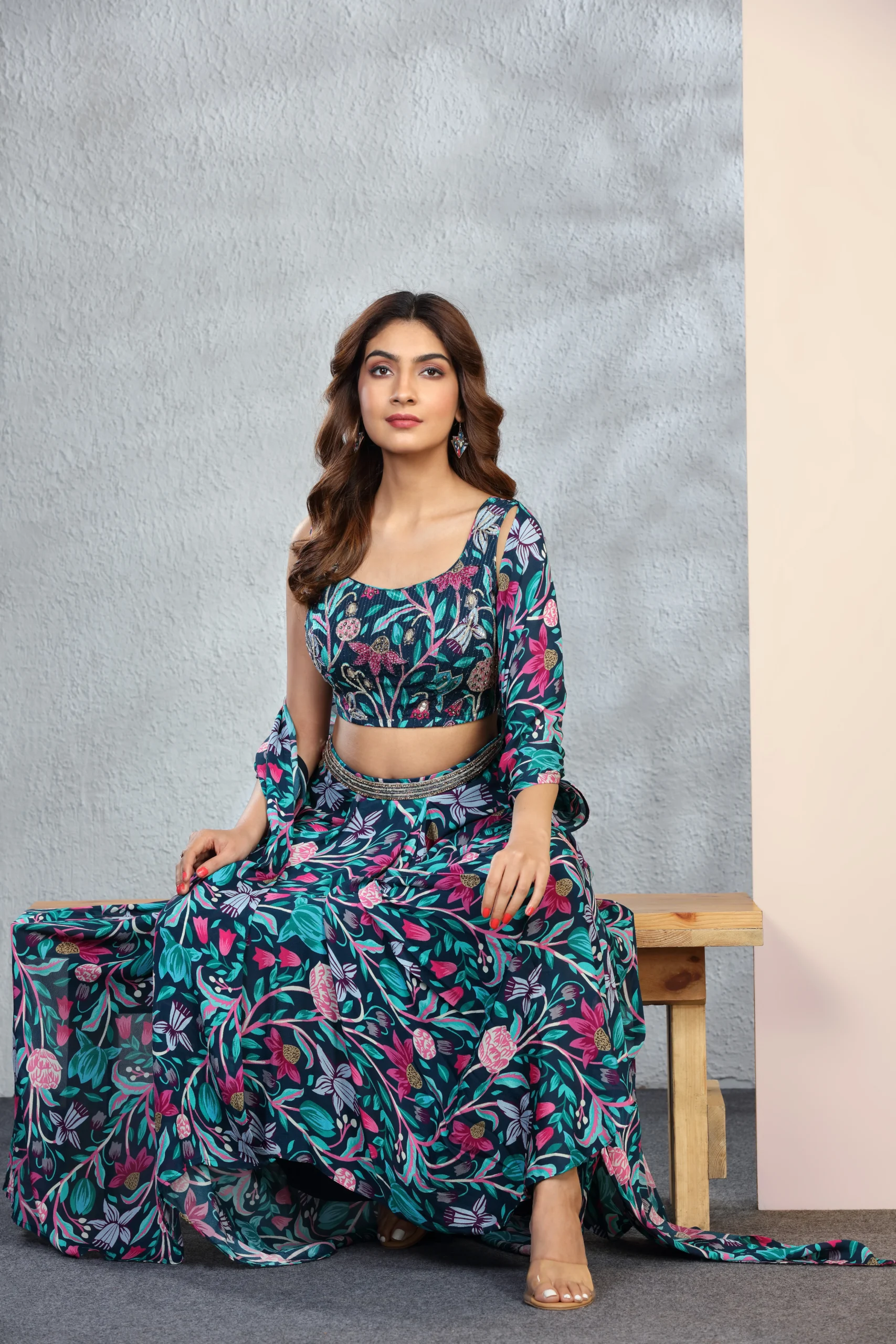Embroidered salwar suits have always been in fashion. Be it the evergreen anarkali kurta with heavy zardozi work or a churidar salwar suit with light thread work, embroidered salwar suits are the perfect choice for various occasions.
Embroidery like Zardozi, Katha work or stone work adds a lot of beauty and glamour to the Indian attire. It turns a dull piece of fabric into a visual masterpiece. For instance, light Zardozi work on a georgette anarkali suit is the perfect choice for wedding parties.
India is famous for its intricately embroidered salwar suit that are available in various fabrics. Intricate thread work or stone work can also be seen on Indo-western gowns in India.
Here are some of the most common forms of traditional Indian embroidery that one can find on Indian ethnic wear for women:
Aari
This type of embroidery is done on a cot and it is also known as the Khatla work. Originated in Uttar Pradesh’s Barabanki area, Aari embroidery is a series of unbroken stitches that take the shape of wildlife motifs and abstract nature. It has got its name from the ‘Aar’ holed needle that is used for creating these stitches.
Chikan Work
This is one of the most famous forms of traditional embroidery that originated from Lucknow. Seen on salwar suits and saris, chikan work involves the use of warp and weft threads for creating a textural effect. The technique for creating chikan work is known as Chikankari and it is done on various textiles such as silk, cotton, chiffon, muslin and organza.
Jali
Another common form of embroidery is the Jali work or net-work which is done by breaking the fabric into holes, pulling apart the warp and weft threads with a needle and tightening it to give the appearance of net. It makes the garment look elegant and unique. Straight line jaali stitches are known as bank jail or hathkati. Other forms include names like makra, bulbul chashm and Tajmahal.
Zardozi
This is the most exquisite and beautiful form of embroidery seen on Indian designer suits for ladies. Originally from Lucknow, zardozi work involves leaf-scrolls worked in silver and gold threads on satin, silk, velvet and other rich fabrics. Initially, silver or gold wires were used for embroidery but today, craftsmen use a combination of copper wire with a silver or gold polish.
Kashidakari
It is a type of needlework in which artisans stitch decorative motifs of maple leaves, birds and other designs on shawls, stoles, bedspreads and even kurtis. Also known as Kashida (Persian for cursive writing), this Kashmiri embroidery is known for its execution of a single stitch called the Kashmiri stitch.
Kantha
This style of embroidery comes from West Bengal. It is basically the ‘running stitch’ that has taken the Indian fashion industry by storm. You can see this embroidery on saris, kurtis and even dhotis.
Phulkari
Belonging to the Punjab region, Phulkari work can be seen on shawls and head scarfs. It means the flower work that uses silk floss threads. Phulkari involves flower motifs, surface satin stitching and geometric patterns.
Lari and Zari
In this form of embroidery, high quality gold thread is used for making exquisite designs on clothes. This work is quite popular in Benaras, Bareilly, Agra and Lucknow. Zari is basically gold plated silver wire wrapped around polyster core.

